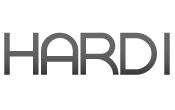Steel Mills

HARDI Wholesalers See Weakening Commercial Construction
Written by Tim Triplett
July 21, 2020
Wholesalers who sell HVAC and galvanized steel products to the construction sector report a market that is sharply split. In a conference call this morning, members of the Heating, Air Conditioning & Refrigeration Distributors International (HARDI) said demand from residential building is surprisingly healthy despite the coronavirus pandemic, while nonresidential/commercial construction is weakening.
“I have seen some pretty negative reports on commercial construction. There’s a pretty stark difference in the number of megaprojects in the works compared to last year,” said one HARDI member.
“It’s a tale of two cities between commercial and residential construction right now,” said another wholesaler, pointing to declining activity in nonresidential. “We’re staying the course. We’ll enjoy the wave on the residential side and take advantage of any commercial opportunities as they surface.”
HARDI members reported some strengthening of galvanized steel prices. Base prices have risen to nearly $34/cwt ($680 per ton) in the past week, they said, from recent lows around $31/cwt ($620 per ton).
John Packard, president and publisher of Steel Market Update, said the leading EAF mills are operating at 80-90 percent of capacity on flat rolled, which indicates improving demand. “Based on conversations I’ve had with mill CEOs over the past few weeks in preparation for SMU’s steel summit, they are all pretty optimistic,” he said. Scrap is expected to move higher in September, which will add support to finished steel prices. “With automotive getting back to some pretty strong production rates, that should keep galvanized tight out of the integrated mills,” he added.
HARDI members described conditions in various parts of the country. “Business remained modest through the first seven months, in terms of sales and pounds sold. Concern still looms as to when the predicted slowdown in construction will start to affect our business,” commented one executive from the Midwest on the call.
He expects an uptick in the spot market price as inventories are lean, lead times are beginning to extend, scrap and iron ore prices are moving up and mills are no longer willing to go below a certain threshold in price negotiations. “If demand continues to increase, I’m hopeful we will have a few fun months of selling steel.”
One wholesaler in the Southeast reported strong activity, which he expects to be even better in the fourth quarter. “All the fundamentals are looking up. We’ve had some good days that are almost back to normal. With contract season coming up earlier than in traditional years, we may have hit bottom and see it trending up in Q4.”
Several HARDI members referenced the AIA’s Architecture Billings Index, which is a leading indicator for nonresidential construction activity. Based on the downturn in projects in planning due to the pandemic, such as offices and retail space, demand for galvanized steel in commercial construction is likely to be weak in the first half of 2021. “We’re already seeing a slowdown on the commercial side,” said one exec on the call. “Looks like it will be significant for a while.”
HARDI’s poll of members on the call showed that 60 percent expect galvanized steel prices to rise by at least $1-2/cwt over the next 30 days. Looking six months ahead, 70 percent see prices up by $2/cwt or more.
Steel Market Update participates in a monthly steel conference call hosted by HARDI. The call is dedicated to a better understanding of the galvanized steel market. The participants are HARDI member companies are wholesalers who supply products to the construction markets, also on the call are service centers and manufacturing companies that either buy or sell galvanized sheet and coil products used in the HVAC industry and are suppliers into the HARDI member companies.

Tim Triplett
Read more from Tim TriplettLatest in Steel Mills

Cliffs idles Steelton, Riverdale, and Conshohocken operations
Cliffs has idled facilities in Riverdale, Ill., and Conshohocken and Steelton, Pa.

Radius loss narrows, volumes climb in ‘healthy’ West Coast market
Stronger steel demand in the Western US, rising scrap flows, and improved rolling mill utilization drove sequential gains for Portland, Ore.-based Radius Recycling.

AISI: Raw steel production backs off multi-year high
US raw steel output edged lower last week after hitting a multi-year high in mid-June, according to the American Iron and Steel Institute (AISI).

Private equity firm Atlas Holdings to acquire Evraz North America
Atlas Holdings said it has signed a definitive agreement to acquire Evraz North America (Evraz NA). The Greenwich, Conn.-based private equity firm said it expects the deal for the Chicago-based steelmaker to close in the second quarter of 2025 subject to various closing condition.

Granite City Works must remain open and other terms of the Nippon-USS deal
SEC documents also name Trump specifically as having veto power certain decisions are part of the “Golden Share” provision.
